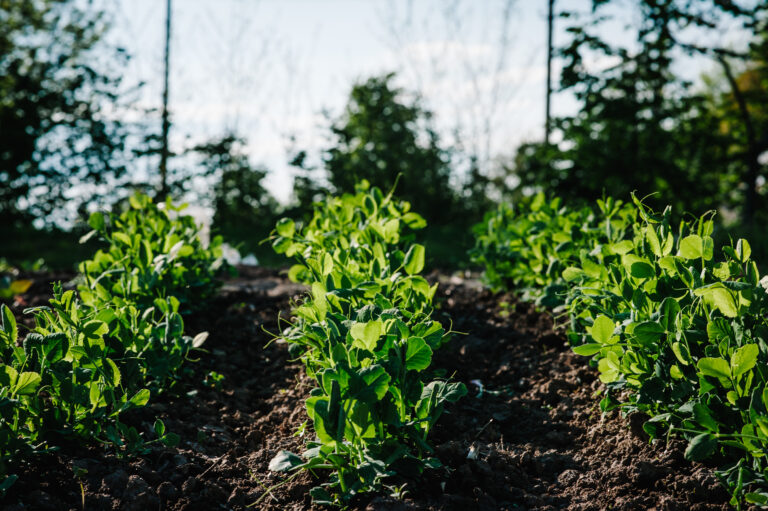About Southern Peas: History, Types, and How They Differ from Other Beans
Southern peas, often called cowpeas, have been a staple of warm-season gardens for centuries. Their history in the southern United States dates back to the colonial era, when they were valued for their heat tolerance, drought resilience, and high protein content. Over time, these legumes became integral to traditional southern cuisine and gardening practices.
Understanding southern peas—how they differ from common garden beans, and the main types available—can help gardeners select varieties suited to their soil, climate, and culinary needs.
A Brief History of Southern Peas
- Native to Africa, southern peas were brought to the Americas via the transatlantic trade.
- Historically grown in the southern United States for food security, livestock feed, and soil enrichment.
- Known for thriving in hot, dry conditions where other beans struggle.
My own experience growing them in both Central Valley and Sonoma Valley gardens confirms their resilience and consistent productivity in high heat.
Types of Southern Peas
Southern peas come in several popular varieties:
- Black-Eyed Peas – Cream-colored with a distinctive black eye, upright bush or semi-vining growth, mild flavor.
- Crowder Peas – Tan, brown, or speckled pods; semi-vining; earthy flavor; later-maturing.
- Purple Hull Peas – Cream-colored peas inside vibrant purple pods; slightly sweet flavor; often vining.
Each type differs in taste, growth habit, and harvest timing, allowing gardeners to select based on culinary preference and garden space.
How Southern Peas Differ from Other Beans
- Heat and Drought Tolerance: Southern peas thrive in temperatures above 85°F; common beans struggle.
- Soil Adaptability: They perform well in lean soils with less water and fertilizer.
- Nitrogen Fixation: Like other legumes, they enrich soil naturally.
- Harvest Flexibility: Can be harvested as snaps, shelling peas, or dry beans; most garden beans are harvested one way.
- Flavor Profile: Distinctly nutty and earthy compared with common green beans or kidney beans.
Experience Insight: Growing southern peas alongside other beans in raised beds highlights their superior resilience during heat waves and low-water periods.
My Takeaway
Southern peas are unique legumes with a rich history, multiple versatile types, and unmatched heat tolerance. Knowing their differences from common beans helps gardeners optimize variety selection, harvest, and culinary use.
Southern Peas Learning Hub
Start Here:
- How to Plant, Grow, and Harvest Southern Peas: A Complete Guide – Overview and complete guide.
- Southern Peas: Essential Planting-to-Harvest Growing Tips – Tips you can use today.
Planning & Preparation
- About Southern Peas: History, Types, and How They Differ from Other Beans – Background, uses, and distinction from other legumes.
- The Best Location for Southern Peas: Soil, Sun, and Garden Bed Prep – Soil, sunlight, and bed preparation.
- When to Plant Southern Peas: Timing for Spring, Summer, and Successive Crops – Sowing schedules for peak yield.
- The Best Southern Pea Varieties: Black-Eyed, Crowder, and Purple Hull Peas – Variety selection based on climate, space, and flavor.
Planting & Early Growth
- How to Plant and Space Southern Peas for Maximum Yield – Planting depth, spacing, and row management.
- How to Grow Southern Peas in Containers: Tips for Small-Space Gardens – Container growing guidance for limited spaces.
Care & Maintenance
- How to Water and Fertilize Southern Peas for Healthy Vines and Pods – Optimal irrigation and feeding practices.
- Seasonal Care Guide for Southern Peas: Weeding, Training, and Midseason Maintenance – Midseason tasks and vine management.
- The Best Companion Plants for Southern Peas (and What to Avoid) – Planting companions for productivity and pest reduction.
Pests & Disease Management
- Southern Peas Pests and Diseases: Identification, Prevention, and Organic Controls – Recognizing problems and implementing organic solutions.
Harvesting & Preservation
- How to Harvest Southern Peas at Every Stage: Shelling, Snaps, and Dry Peas – Picking at different maturity stages.
- How to Store and Preserve Southern Peas: Freezing, Drying, and Long-Term Keeping – Preservation methods for year-round use.

